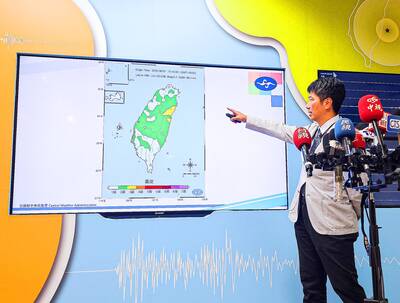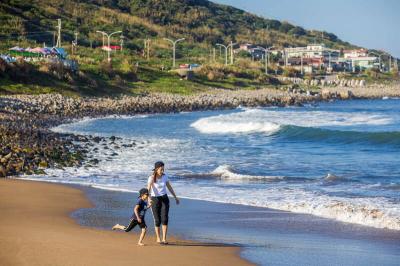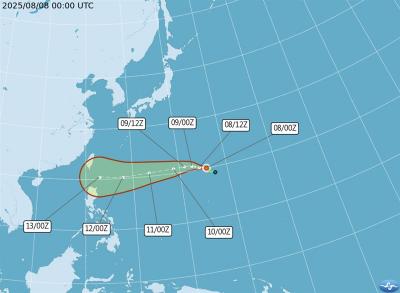One of China’s “democratic” minority political parties, the Revolutionary Committee of the Chinese Kuomintang (RCCK) yesterday urged Beijing to end its political impasse with Taiwan once and for all and to build a cross-strait military mechanism to promote mutual trust.
RCCK Vice Chairman Zheng Jianbang (鄭建邦) said that based on the (so-called) “1992 consensus” and an “anti-Taiwan independence” stance, Taipei and Beijing should seek to put an end to their political impasse and build a mutual trust mechanism for specifically for military matters.
The CKRC is one of China’s eight registered minority parties.
CKRC Vice Chairman Zheng Jianbang (鄭建邦) made the proposals at the fifth meeting the 11th Chinese People’s Political Consultative Conference (CPPCC) on behalf of the party.
Zheng said ending hostilities and building mutual trust were necessary to secure long-lasting peace across the Taiwan Strait, adding that both sides should work to remove barriers to facilitate the creation of a cross-strait peace accord through dialogue.
He also advocated that China and Taiwan deepen their economic cooperation by synchronizing China’s 12th five-year economic plan (from last year to 2015) with President Ma Ying-jeou’s (馬英九) economic vision of a “golden decade” for Taiwan.
The two sides should also cooperate more closely in the cultural and creative sector to help sharpen the competitiveness of their products in global markets, Zheng said.
The idea of a cross-strait military trust mechanism has been floated for a number of years and calls for such a development have intensified in recent years.
Earlier this month, Major General Luo Yuan (羅援), a former Chinese deputy minister at the Academy of Military Science, said at the same CPPCC conference that Taiwan and China should strive to emphasize a shared military culture.
However, Luo bemoaned the lack of progress in cross-strait exchanges, which he attributed to foot-dragging on Taipei’s part.

Aftershocks from a magnitude 6.2 earthquake that struck off Yilan County at 3:45pm yesterday could reach a magnitude of 5 to 5.5, the Central Weather Administration (CWA) said. Seismological Center technical officer Chiu Chun-ta (邱俊達) told a news conference that the epicenter of the temblor was more than 100km from Taiwan. Although predicted to measure between magnitude 5 and 5.5, the aftershocks would reach an intensity of 1 on Taiwan’s 7-tier scale, which gauges the actual effect of an earthquake, he said. The earthquake lasted longer in Taipei because the city is in a basin, he said. The quake’s epicenter was about 128.9km east-southeast

GENSLER SURVEY: ‘Economic infrastructure is not enough. A city needs to inspire pride, offer moments of joy and foster a sense of belonging,’ the company said Taipei was named the city with the “highest staying power” in the world by US-based design and architecture firm Gensler. The Taiwanese capital earned the top spot among 65 cities across six continents with 64 percent of Taipei respondents in a survey of 33,000 people saying they wanted to stay in the city. Rounding out the top five were Vietnam’s Ho Chi Minh City (61 percent), Singapore (59 percent), Sydney (58 percent) and Berlin (51 percent). Sixth to 10th place went to Monterrey, Mexico; Munich, Germany; Sao Paulo, Brazil; Vancouver; and Seoul. Cities in the US were ranked separately, with Minneapolis first at

The New Taipei City Government today warned about the often-overlooked dangers of playing in water, and recommended safe swimming destinations to cool off from the summer heat. The following locations in the city as safe and fun for those looking to enjoy the water: Chienshuiwan (淺水灣), Baishawan (白沙灣), Jhongjiao Bay (中角灣), Fulong Beach Resort (福隆海水浴場) and Sansia District’s (三峽) Dabao River (大豹溪), New Taipei City Tourism and Travel Department Director-General Yang Tsung-min (楊宗珉) said. Outdoor bodies of water have variables outside of human control, such as changing currents, differing elevations and environmental hazards, all of which can lead to accidents, Yang said. Sudden

Tropical Storm Podul has formed over waters north-northeast of Guam and is expected to approach the seas southeast of Taiwan next week, the Central Weather Administration (CWA) said today. The 11th Pacific storm of the year developed at 2am over waters about 2,660km east of Oluanpi (歐鑾鼻), Pingtung County — Taiwan's southernmost tip. It is projected to move westward and could have its most significant impact on Taiwan on Wednesday and Thursday next week, the CWA said. The agency did not rule out the possibility of issuing a sea warning at that time. According to the CWA's latest update, Podul is drifting west-northwest